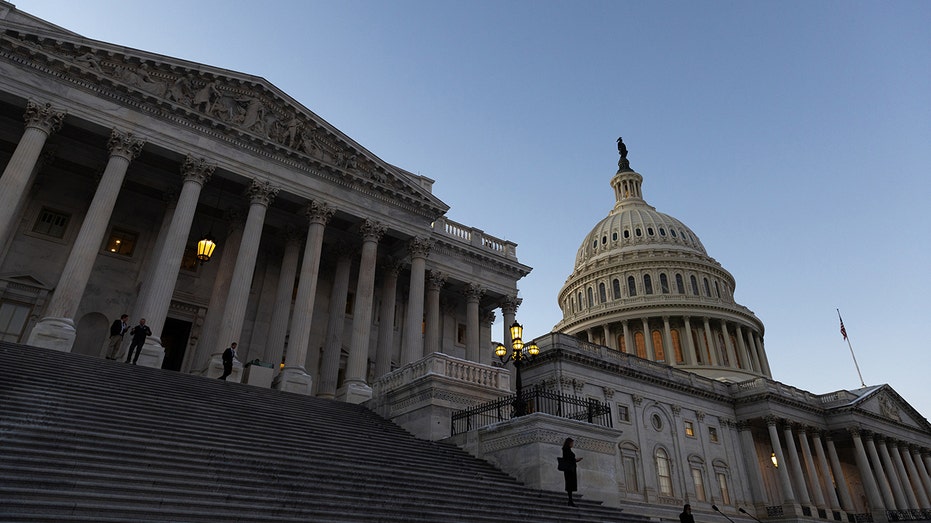Economist Peter Morici breaks down what the national debt is, why it ballooned to more than $34 trillion and what it means for Americans.
Prospective homebuyers in the U.S. are keeping a close eye on the Federal Reserve as they eagerly await interest rate cuts that could offer relief from painfully high borrowing costs.
But there is another factor that could keep mortgage rates elevated in the coming months and years: the U.S. national debt.
“As mortgage rates remain near 7%, a lot of attention is being paid to the timing of Federal Reserve interest rate cuts,” said Lisa Sturtevant, Bright MLS chief economist. “But a delay in Fed rate cuts is not the only reason mortgage rates will remain higher for longer. A record-high federal debt is also contributing to persistently high mortgage rates.”
That’s because the federal government has to pay a massive amount of interest on the debt that it owes. To do so, the government will issue more Treasury bonds – which it needs to pay out a good return to attract investors – to raise capital, Sturtevant said. But mortgage-backed securities are competing for the same investors and also need to offer a high rate of return.
MORTGAGE CALCULATOR: SEE HOW MUCH HIGHER RATES COULD COST YOU
The U.S. Capitol in Washington, D.C., on Jan. 17, 2024. (Photographer: Julia Nikhinson/Bloomberg via Getty Images / Getty Images)
“Consequently, the mortgage loans bundled up to form those mortgage-backed securities must have a relatively high interest rate attached to them,” she said.
In its latest budget and economic outlook, the Congressional Budget Office projected that the nation’s publicly held debt will surge from 99% of GDP at the end of 2024 to 122% of GDP by the end of 2034, the highest level ever recorded.
“Then it continues to rise,” the report said.
The risk is that if the U.S. continues to grow its debt at such an unsustainable rate, foreigners – including private investors and central banks – holding Treasury bonds will start to sell them down, Desmond Lachman, a senior fellow at the American Enterprise Institute, told FOX Business.
HOW MUCH OF YOUR TAX MONEY GOES TOWARD SERVICING THE US NATIONAL DEBT?
Foreigners currently own about 30% of all outstanding Treasury securities, according to The Wall Street Journal, which cited data from the Securities Industry and Financial Markets Association.

A home for sale in San Jose, California, on Feb. 7, 2024. (Loren Elliott/Bloomberg via Getty Images / Getty Images)
If foreigners were to sell their bonds, the U.S. government would likely struggle to finance itself and pay down the mounting interest costs on the debt. Should that happen, the Federal Reserve would most likely step in and print the money, driving inflation and long-term interest rates higher, Lachman said.
US NATIONAL DEBT TRACKER
“That’ll send long-term interest rates high. Irrespective of what the Fed’s doing at the short end, the long rates can go very high if you get a dollar crisis, and you get all these people dumping their bonds,” he said. “That’s really where the risk is.”
Mortgage rates spiked in 2022 and 2023 as the Fed waged an aggressive campaign to crush high inflation. In the span of just 16 months, the central bank approved 11 rate increases – the fastest pace of tightening since the 1980s.
GET FOX BUSINESS ON THE GO BY CLICKING HERE
While the federal funds rate is not what consumers pay directly, it affects borrowing costs for home equity lines of credit, auto loans and credit cards.
Rates on the popular 30-year fixed mortgage are currently hovering around 6.87%, according to Freddie Mac. While that is down from a peak of 7.79%, it remains far higher than the pandemic-era lows of just 3%.
Even just a minor change in mortgage rates can affect how much potential homebuyers pay each month. A recent study by LendingTree compared the average monthly payments on 30-year fixed-rate mortgages in April 2022, when the rate hovered around 3.79%, and one year later, when rates jumped to 5.25%. It found that higher rates cost borrowers hundreds more each month and potentially added as much as $75,000 over the lifetime of the 30-year loan.
Credit: Source link




